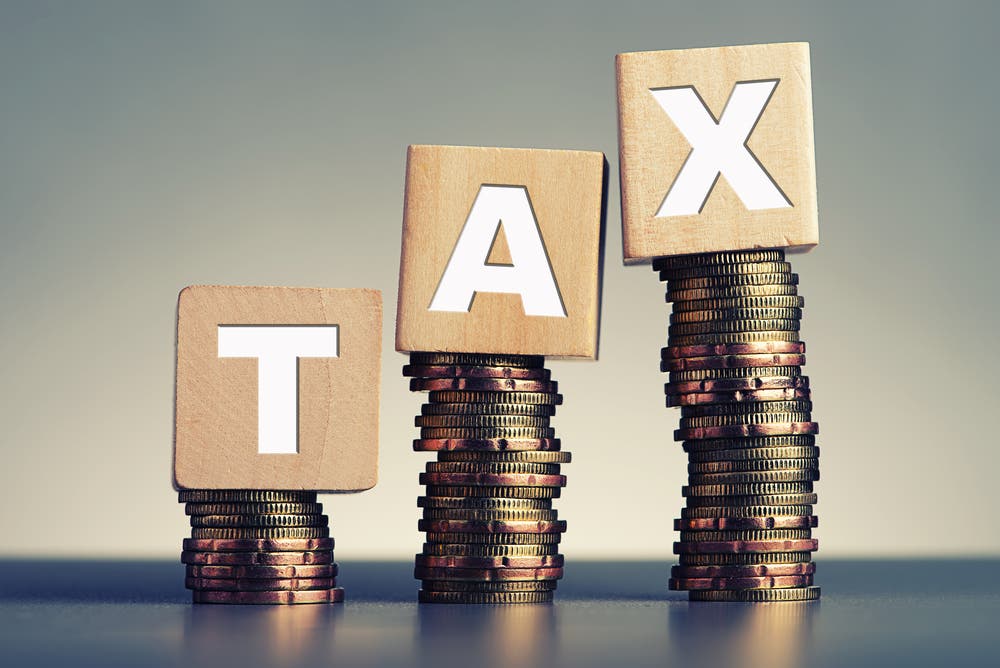News
Two million workers fall into higher rate tax band

Nearly two million people have crossed the tax threshold to pay the higher or additional rate in just three years. But estimates suggest this figure is likely to swell.
For the 2022/23 tax year, the government projects there will be 5.5 million higher rate (40%) taxpayers – a 43.9% increase compared to 2019/2020.
The HMRC statistics also suggest there will be 629,000 people paying the additional (45%) rate of tax – nearly 50% more than in 2019/20.
In total, those paying tax at the higher or additional rates are expected to total 6.1 million people this tax year.
This is up from the 5.3 million recorded in the 2021/22 tax year, and up from the 4.5 million in 2020/21.
And at the start of this current parliament in 2019/20, there were 4.2 million higher rate taxpayers, showing this number has swelled by nearly two million (1.88 million).

Wellness and wellbeing holidays: Travel insurance is essential for your peace of mind
Out of the pandemic lockdowns, there’s a greater emphasis on wellbeing and wellness, with
Sponsored by Post Office
Meanwhile, the number of people now paying tax has also climbed in the last three years, from 31.5 million in 2019/20 to an estimated 34 million now.
In total, it is estimated that taxpayers will fork out £251bn this tax year, up from the £189bn bill three years ago.
‘Starting point for higher rate tax not kept pace with rising incomes’
According to Steve Webb, partner at consultancy Lane, Clark and Peacocks, who is also former pension minister, the number of higher rate taxpayers is set to soar over the remainder of this parliament.
This is because the starting point for higher rate tax has been frozen until 2025/26 at a time when wages and pensions are expected to “increase rapidly”.
Webb said: “Our estimates suggest that the total number of higher rate taxpayers could increase by more than three million over the whole of this parliament. This would take the total to over seven million in 2024/25. This represents roughly one in five of all taxpayers, and would represent an increase of around 70% in the number of higher rate taxpayers over the parliament as a whole.
“The number of higher rate taxpayers (including those paying at the ‘additional’ 45% rate), has risen substantially in recent years. In 2009/10 there were around 3.2 million higher rate taxpayers compared with an estimated 6.1 million in 2022/23.”
He added: “Paying higher rate tax used to be reserved for the very wealthiest, but this has changed very dramatically in recent years. The starting point for higher rate tax has not kept pace with rising incomes, and the current five-year freeze on thresholds has turbo-charged this trend.
“People who would not think of themselves as being particularly rich can now easily face an income tax rate of 40% and around one in five of all taxpayers will soon be in the higher rate bracket.”
Five ways to save tax
Sarah Coles, senior personal finance analyst at Hargreaves Lansdown, lists these tips to save on your tax bill:
1) ISAs protect your savings and investments from tax. If you’re saving to buy a first property, have at least a year until you plan to buy, and are aged 18-39, you should also consider a Lifetime ISA, because in addition to tax free growth, you get a 25% bonus on contributions.
2) Contributions to pensions attract tax relief at your highest marginal rate, and the first 25% taken from the pension is usually tax-free. There’s tax relief on pensions even for non-taxpayers – on the first £3,600 a year.
3) In some cases, the government will let you give up a portion of your salary, and spend it on certain things free of tax (and in some cases national insurance). This includes pensions, bike-to-work schemes, and technology schemes.
4) You can take advantage of the spouse exemption that means assets that produce an income can be passed between spouses without triggering a tax bill. They can therefore be shared between a couple, so that both take advantage of their allowances. The balance can be held by the spouse paying the lower rate of tax, to reduce the tax payable.
5) If you qualify for the marriage allowance, make sure you claim it. If you’re married or living in a civil partnership, one of you doesn’t earn enough to pay tax and the other is a basic rate taxpayer, you can claim the allowance. The lower earner applies to transfer a tenth of their personal allowance to the higher earner, so they pay tax on less of their income. This year it will save them £252, but it can be backdated for the previous four years (as long as you qualified in all of them), and will continue to be applied until your circumstances change and you ask for it to stop. Over two million people who qualify haven’t claimed yet, so make sure you do.